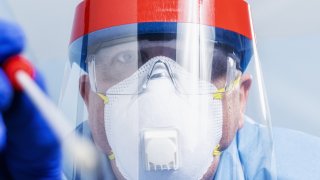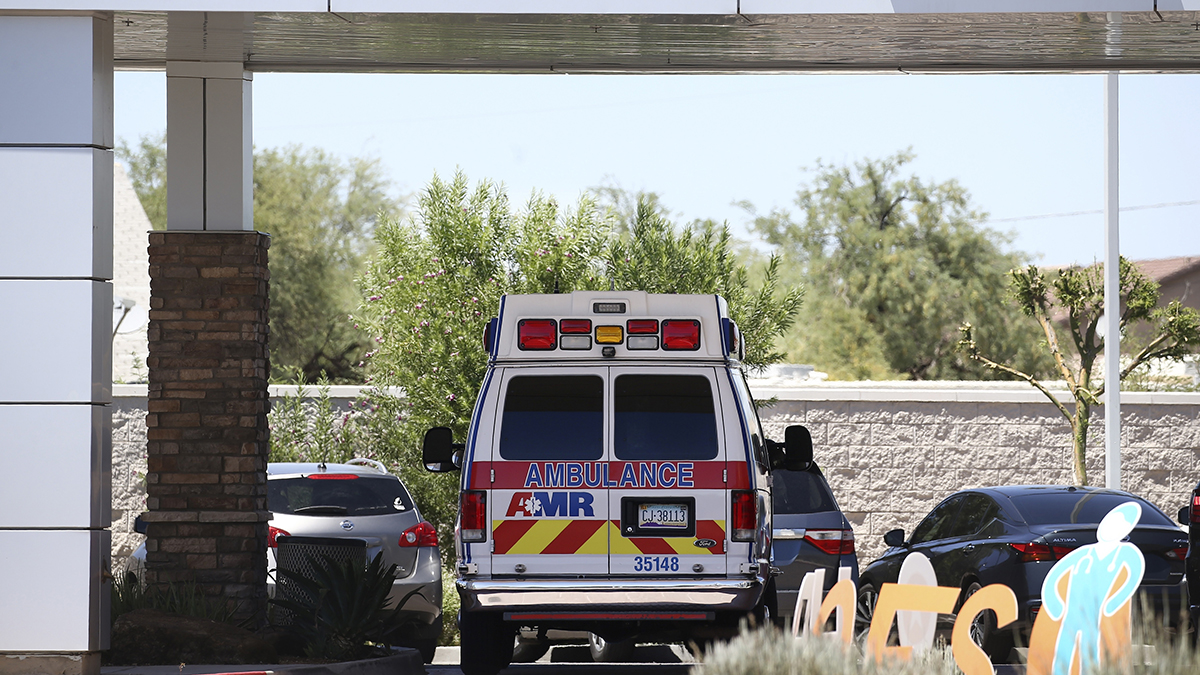
The coronavirus is most commonly transmitted through the nose and mouth, but it's also possible to get COVID-19 through your eyes, according to experts.
In addition to social distancing, hand-washing and wearing face masks, the use of eye protection, such as goggles, visors and face shields, may help keep infection rates low for health care workers and others, according to a new systematic review and meta-analysis of 172 studies from 16 countries and six continents that was recently published in The Lancet. The findings suggest that for health care workers and administrators, in particular, eye protection may add a substantial defense against viruses like COVID-19, SARS and MERS.
While the findings aren’t conclusive, wearing eye protection may make COVID-19 transmission about three times less likely, according to the study. The risk of transmission was reduced from 16% to 5.5% on average for people who protected their eyes with goggles, face shields and other eye PPE compared with those who didn’t apply any eye covering. For the general public, "eye protection is typically under-considered," the study authors pointed out, even though it can be "effective in community settings."
Thus far, on its website, the Centers for Disease Control has only issued formal guidelines around eye protection for health care workers, recommending that it be used “in areas with moderate to substantial community transmission.” Otherwise, the CDC says it’s optional in “areas with minimal to no community transmission” (unless eye protection is recommended as a precaution). The CDC also notes that "personal eyeglasses and contact lenses are not considered adequate eye protection" for health care workers.
More Coronavirus Pandemic Coverage
No single intervention is going to offer 100% protection against COVID-19, but the study authors suggest that combining physical distancing with face masks, eye protection and hand-washing will further reduce your risk, especially if you have an underlying medical condition (or are otherwise at increased risk) — or you need to spend time in areas where there's a greater risk of community transmission, such as if you work with the public or regularly use public transportation.
How does the coronavirus enter through eyes?
Dr. Joseph Fair, an NBC News contributor and virologist, told TODAY on Wednesday that he believes he caught the coronavirus during a recent, full flight from New York City to New Orleans. He said he was taking "max precautions," including wearing a face mask and gloves, but he didn't have eye protection and was sitting right next to another person.
"It usually happens because of contact," NBC News medical correspondent Dr. John Torres told TODAY. "You touch something, and you rub your eye and you get it in that way."
Another, less common way COVID-19 eye transmission can occur is if someone coughs or sneezes on you and you don't protect your eyes.
The coronavirus then binds to receptors on the surface of the eyes and spreads throughout the body, Torres explained. He added that receptors in the nose distribute virus droplets in a similar way.
It's important to note, though, that they don't work exactly the same. For example, when a virus lingers in the air after someone sneezes, its aerosols can enter the nose and mouth and infect the body. This "isn't a huge concern" for the eyes, Torres said.
How common is eye transmission of COVID-19?
Catching the coronavirus through your eyes is much less common than through your nose or mouth for two reasons, Torres explained.
First, it's a respiratory virus so it's more "attuned" to the nose and mouth. Second, when you're near someone sneezing or coughing, your first reaction is usually to blink, which helps prevent the droplets from entering your eyes.
Dr. Anthony Fauci of the White House's coronavirus task force has also asserted that contracting the virus through the eyes is the least common method, according to Torres.
That said, Torres wouldn't call COVID-19 eye transmission a "rare" occurrence. There's currently no data on how often it happens.
How to protect your eyes from the coronavirus
Whether you should take precautions to protect your eyes from the coronavirus depends on where you are, according to Torres.
For example, you may consider wearing glasses or goggles "if you're in an area where you can't (practice) social distancing" or "if you're around people ... coughing or sneezing a lot," he said.
But, he added, "For the majority of us just walking around every day, especially outside, other than sunglasses or regular vision glasses, I'm not sure that (eye protection, like goggles) would add that much benefit."
This story first appeared on TODAY.com. More from TODAY:



